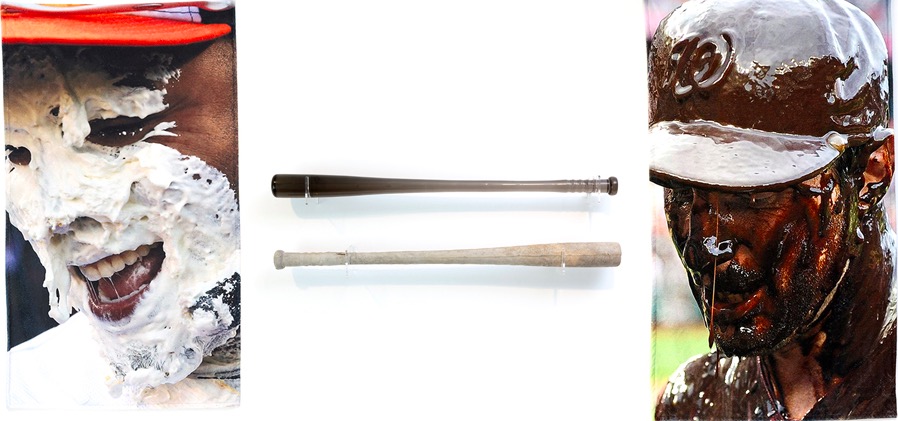
The Twenty-Ninth Bather
1119 La Brea Ave, Los Angeles, CA 90019
Saturday, January 11 at 5:00 PM – 7:00 PM
Ends Feb 15, 2020
Ends Feb 15, 2020
Lyndon Barrois | William Brickel | Justin Cloud |
Andrew Kuo | Rosie McGinn | Evie O’Connor |
Ilana Savdie | Ashley Teamer | Gray Wielebinski
The young men float on their backs, their white bellies bulge to the sun, they do not ask who seizes fast to them.
They do not know who puffs and declines with the pendant and bending arch,
They do not think whom they souse with spray.
Walt Whitman, Song of Myself, Section XI
We look. We look not for but at, delighting in the unpredictability of a conscious object. Bodies move.
Paintings, sculptures, films, texts move and unmove. Yet it’s entirely different—we seek the objectivity
that art eludes us. Winners, losers. Actors of triumph and tragedy, not mere representations of. When
anything can be made good or bad with a kaleidoscopic twist in perception, when everything begins
and ends with taste, we begin to envy those whose achievements are physical, and thus visible,
concrete, unassailable. So we watch.
The Twenty-Ninth Bather references a passage in Walt Whitman’s Song of Myself, in which a woman
discretely looks on as “twenty-eight young men bathe by the shore.” Taking voyeuristic pleasure in
watching these men play, Whitman’s subject becomes the twenty-ninth bather via her imagined
participation while keeping her distance physically. Today, spectatorship functions similarly, serving
as the engine that keeps the sports-industrial complex running, even while degrees of separation
remain between athlete and viewer.
Contemporary sport carries its own, distinct set of aesthetic pleasures; while the movement of bodies
and geometric objects have captured the imagination for millennia, sport captivates through other
means, an elusive gestalt. It is why soccer is referred to as “the beautiful game.” It is not the players
that are beautiful, nor the ball or the field or the fans (though each may convey beauty in their own right),
but rather the game itself. The artists in The Twenty-Ninth Bather consider the intrinsic value that sport
and its objects yield by exploring the space between the game, athlete, and viewer.
Both Rosie McGinn’s and Lyndon Barrois’ kinetic sculptures are composed of everyday found objects;
while Barrois’ Black Jockeys Praxinoscope (2019) evokes a concealed history in American horse racing,
McGinn’s The Boléro (2019) celebrates an iconic moment in British sports viewing history. Adopting
sporting objects as sculptural material, Gray Wielebinski, Ilana Savdie, and Justin Cloud respectively
position the baseball bat, the umpire’s gear, and the sneaker as aesthetic forms of intrigue. Ashley
Teamer repurposes a fading symbol of fandom—the trading card—in her dynamic collages which, along
with Andrew Kuo’s portraits of the fleeting NBA star Jeremy Lin, consider the effects of hypercommodification on the athlete. The stillness evoked in Evie O’Connor’s athletic encounters within
pastoral scenes proves scopophilic. William Brickel’s intertwining figures address the fluidity of play and
attraction, muddled amidst the physical intimacies of sports, and maybe even viewership. Like the
twenty-ninth bather, constraints of gender and social conventions are momentarily cast aside.
